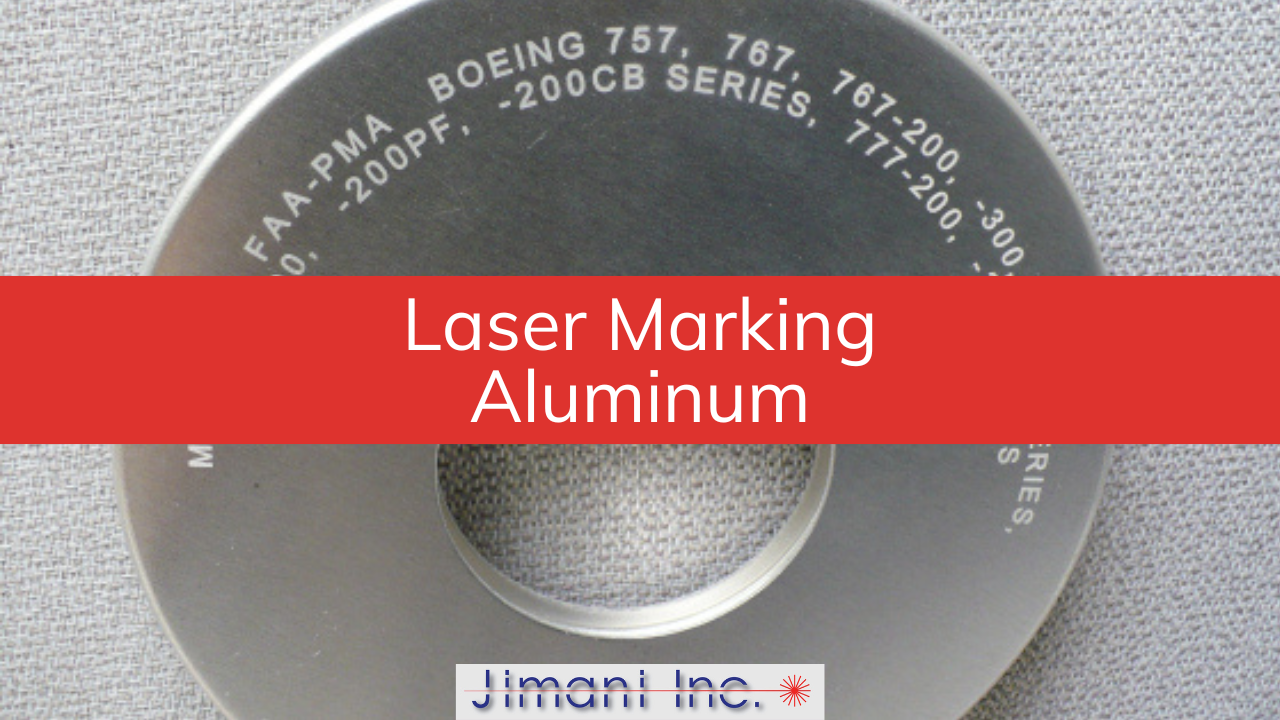The Versatility of Laser Engraving Aluminum
Marking aluminum is one of the most common applications for a fiber laser marking system. This is...

The versatility of laser marking systems for aluminum applications spans numerous high-precision industries. Aluminum substrates, with their diverse alloy compositions, geometries, and surface finishes, are ubiquitous across aerospace, automotive, medical device manufacturing, and advanced electronics sectors. Each application demands specific marking requirements for traceability, identification, or functional purposes.
 Hybrid fiber laser marking systems provide exceptional flexibility in marking parameters and methodologies. The system's ability to precisely control power density, pulse width, and beam characteristics enables multiple marking techniques including surface engraving through controlled material removal through localized vaporization, deep engraving via multi-pass processing for dimensional marking, ablation through selective removal of surface layers or coatings, and annealing/surface modification using thermally-induced oxide formation for high-contrast marks.
Hybrid fiber laser marking systems provide exceptional flexibility in marking parameters and methodologies. The system's ability to precisely control power density, pulse width, and beam characteristics enables multiple marking techniques including surface engraving through controlled material removal through localized vaporization, deep engraving via multi-pass processing for dimensional marking, ablation through selective removal of surface layers or coatings, and annealing/surface modification using thermally-induced oxide formation for high-contrast marks.
 The effectiveness of aluminum laser marking is fundamentally tied to the material's optical and thermal properties. The hybrid fiber laser's 1064nm wavelength exhibits optimal coupling with aluminum substrates, enabling efficient energy transfer.
The effectiveness of aluminum laser marking is fundamentally tied to the material's optical and thermal properties. The hybrid fiber laser's 1064nm wavelength exhibits optimal coupling with aluminum substrates, enabling efficient energy transfer.
This wavelength-material interaction, combined with sophisticated pulse shaping capabilities, allows precise control over heat-affected zone dimensions, mark depth and topology, surface finish characteristics, and oxide layer formation.
The hybrid fiber laser marking system represents a significant advancement in industrial marking technology. The system incorporates advanced beam delivery features such as precision galvanometer scanning, dynamic focal plane adjustment, real-time power monitoring, and beam quality optimization.
System integration capabilities include industrial automation interfaces, vision system compatibility, network connectivity, and advanced safety interlocking. Process control is managed through parameter optimization algorithms, quality verification systems, process monitoring capabilities, and automated mark validation.

The integrated marking software platform provides comprehensive control over marking parameters and workflow management through CAD/CAM file compatibility, vector and bitmap processing, mark sequence optimization, process parameter libraries, and quality control integration.
Key performance metrics of the hybrid fiber laser marking system include mark contrast exceeding 98% on typical aluminum alloys, position accuracy of ±0.1mm, repeatability of ±0.02mm, marking speed up to 5000 mm/s, and a minimum feature size of 0.1mm.
Several factors require careful consideration for optimal implementation in production environments. Environmental controls encompass temperature stability requirements, dust/contamination management, and ventilation specifications.
Process integration involves material handling systems, production line synchronization, quality control integration, and data management systems. A comprehensive maintenance protocol includes preventive maintenance scheduling, performance monitoring, calibration procedures, and system diagnostics.
This technical overview provides a foundation for understanding aluminum applications' hybrid fiber laser marking capabilities. Comprehensive documentation covering material-specific processing parameters, integration protocols, quality control methodologies, performance optimization strategies, and maintenance procedures is available for detailed specifications and application-specific parameters.
The evolution of hybrid fiber laser technology continues to expand the capabilities and applications in aluminum marking, offering enhanced precision, reliability, and process control for advanced manufacturing requirements.
Marking aluminum is one of the most common applications for a fiber laser marking system. This is...
Laser marking aluminum is, as we've previously discussed, one of the most common applications for a...
Aluminum in a common material found in nearly every industry. In many of the industries in which...